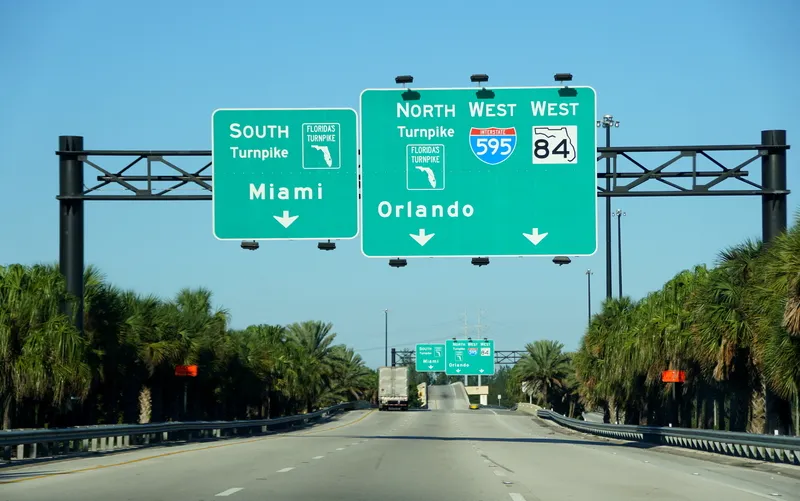
Florida Turnpike Enterprise has started using IntelliConnect, an incident detection and safety messaging platform from Kyra Solutions.
The initial phase in the southern US state covers a 20-mile (32km) section of the Turnpike Mainline and Beachline Expressway in Orlando.
It includes a variety of new incident detection, safety messaging and monitoring services for motorists and traffic management professionals. These services - available for both connected (CV) and non-connected (non-CV) vehicles - are designed to reduce the number and severity of primary and secondary crashes across the Turnpike’s new Smart Roadway System.
Kyra Solutions is headquartered in Lakeland, east of Tampa on Florida’s west coast. The company’s IntelliConnect smart infrastructure platform facilitates the integration and monitoring of all roadside devices into a single unified operational view, including fusing data from all devices into one standard format.
Turnpike Enterprise can now connect and monitor emerging CV equipment (road side unit and edge/roadside controllers), current traffic management infrastructure (Lidar, camera, radar and other sensors), additional ITS devices (VMS, DMS, VSL and other electronic signage), new and existing in-house and third party data sources and software applications (custom and commercial).
The goal is to improve incident detection and distribute timely safety messages to motorists and traffic management professionals.
Florida Turnpike Enterprise is a unit of the Florida Department of Transportation that is responsible for all operations on every FDoT-owned and operated toll road and bridge - about 965km of roadway and 80% of all toll facilities in the state.
“These safety messages will assist motorists in making informed driving decisions while also supporting traffic management professionals in selecting and modifying incident response plans” said John Easterling, traffic operations engineer for the Enterprise.
“IntelliConnect platform’s real-time health monitoring of all device and data communication is vital in ensuring efficient operations. The Turnpike Enterprise can now use IntelliConnect to perform critical functions for detection of wrong-way driving, curve speed, hot-spots/work zones, congestion/queues, disabled vehicles and electronic emergency brake lights. It can broadcast safety messages/TIM to CVs and non-CV using dynamic geofence capabilities,” said Easterling.








